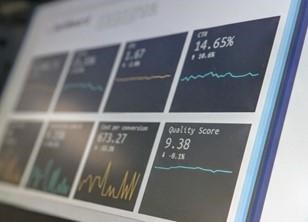How to Choose the Best BI Tool in 2022

If you’re looking at business intelligence (BI) tools, it can be hard to make the right choice. Every company says that they’re the best option, and third-party sites are often paid to feature a specific BI tool. Even if you find one with a high rating, that doesn’t tell you how it compares to the others. That’s why you should look at detailed analyses of BI tools instead of sponsored articles. You can get the facts about what each one has to offer, and see how they compare based on standardized metrics.
Here’s what Gartner has to say
The research firm Gartner’s most recent Gartner Magic Quadrant Business Intelligence report offers an unbiased view of the top business intelligence and analytics vendors, and identifies marketplace trends as well. The report 42-page report is very thorough; if you’re going to read the whole thing yourself, you’ll definitely need a few hours.
Gartner uses two main evaluation criteria:
- “Ability to Execute”, including aspects such as company viability, pricing, customer experience, and product capabilities.
- “Completeness of Vision”, including aspects such as product strategy, innovation, and market understanding.
Each vendor is evaluated according to these criteria, and then mapped onto a two-dimensional matrix that lets you compare all of them in one place. The top-rated vendors (Leaders) occupy the upper right quadrant, and the lowest-rated vendors (Niche Players) are put in the lower left quadrant. You’ll also find Challengers and Visionaries, in the upper left and lower right quadrants. This year’s report includes 20 companies, and only 3 were named as Leaders.
Which features are included in the top BI tools?
Gartner’s report is pretty dense, but you don’t have to read the entire thing to find out what your best options are. Instead, you could look at their 3 “Leaders” and compare their primary capabilities; this is where you’ll find the features that could be most valuable to your organization. Here are the main capabilities to look for:
Data Analysis
- Interactive dashboards let users view real-time data. They can engage with the information they’re working with and use it to generate customized reports. Even when they’re working with large data sets, interactive dashboards make it easier for stakeholders to view performance overviews at a glance.
- Data visualization works to present complex data sets in a more compact format. The BI tool you choose should include multiple options for data visualization, since you can’t cram every data set into the same few visualization styles.
- Augmented analytics improve data quality and profiling with machine learning automation. Users can be notified of anomalies or outliers if the data changes, and detect fundamental insights like associations, trends, correlations, or variances without having to explore the data themselves.
- Fully functional mobile capabilities allow users to stay on top of things even when they only have access to a mobile phone or tablet. A range of capabilities help them stay productive wherever they are, and mobile-optimized dashboards ensure a great user experience.
Data Management
- Governed self-service lets everyone in the organization interact with the data, while also maintaining data integrity by managing permissions and restrictions. When stakeholders can access the information they need when they need it, this promotes innovation without risking data quality.
- Scalability gives your organization room to grow, no matter how much your business intelligence needs expand over the years. The best BI tools include a variety of capabilities. Even if you won’t need to use all of them right away, you should choose one that will continue to be useful and relevant as your organization develops.
- A flexible cloud strategy allows your organization to use its current data storage solution, with the option to change your strategy to accommodate future data storage needs. Even if your current data storage solution works well for now, it’s important to have the option to change later on if needed.
- Data integration connects users to existing data sources without having to write custom code, and without having to invest in additional products.
Ease of Use
- Embedded analytics integrates data visualizations and analytical capabilities into dashboards so that users can view data on the fly. Using real-time reports and interactive dashboards, embedded analytics streamlines workflows and improves accessibility for all users.
- A single interface maintains consistency for users, no matter how basic or advanced their technical skills are. From deep-dives into massive data sets to generating a simple report, a BI tool should provide the same interface across the board.
- Data literacy is crucial if a BI tool is going to be used across an entire organization. A user-friendly interface and more natural language let stakeholders gain a better understanding of the data they’re analyzing, without making them learn advanced technical skills beforehand.
Other factors to consider when choosing a business intelligence tool
Picking a BI tool with the right capabilities for your organization is key, but that isn’t the only thing to look at when comparing the top contenders.
- Total cost of ownership could have a big influence on the suitability of a BI tool for your organization. You should consider the cost of the actual software, plus other potential expenses like scaling up data volume, administration costs, hardware, and additional set-up costs.
- Passive vs. active data is a choice that you should carefully consider. A lot of BI approaches fail to supply you with real-time data on your operations, your market, and your customers. In order to make data-based business decisions, you need “active data” to come from analytics pipelines that deliver the data as soon as it’s available.
- Data integration takes multiple raw data sources and combines, transforms, and catalogues them. In order to properly leverage the analysis features, you’ll need robust data integration capabilities.
The takeaway
It’s possible to evaluate business intelligence tools based on objective criteria, but you also have to consider them based on the needs of your organization. Once you’ve identified what you want from a BI tool, it’ll be easier to find the one that’ll keep your organization moving forward for years.




